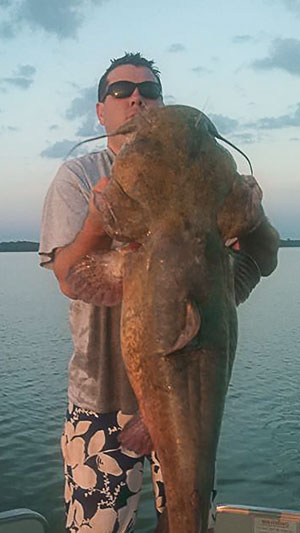Whether he is servicing his accounts or noodling in his free time, Tyson Coble loves a good challenge.
By Laura Thill

Tyson Coble
Transitioning from an 8-to-5 lab job to a field sales career may present a challenge for some. For LABSCO sales rep Tyson Coble, it has been a welcome change. His move from his former position as a medical technician and manager to his current role as a sales rep has been nothing but “great,” he says. “I am super competitive and love the adrenaline rush of making a sale.”
That said, Coble makes it a point to consult with his customers on solutions that will bring the greatest value to their practice. Medical products sales is definitely not a one-solution-fits-all business, he says. “It is important to treat each customer differently, for who they are,” he explains, adding that his consultative experience as a laboratory manager has helped him do so.
Good timing
Working as a medical technician served Coble well for nearly six years, and helped him finance an associate degree, followed by a college degree in biology. After college graduation, he worked at two different labs, and eventually was promoted to manager at one. But, by 2011, he was ready for a change. “I had been looking to transition to a career in sales or as a service tech,” he recalls. “While I wanted to stay connected to the lab, I was tired of the day-to-day work.
“My LABSCO rep suggested I reach out to LABSCO, where there was a sales rep opening,” he continues. “The timing worked out perfectly. One thing led to another, and I joined LABSCO [as a field sales rep]. My territory includes the state of Oklahoma and the northern part of Arkansas.”
Still, the transition took some getting used to, says Coble. Parting with his former laboratory to call on customers who are miles and miles apart required some new skills. “As a med tech, you may look at slides from 8 to 5,” he says. “As a sales rep, you never know what will happen from one minute to the next. It has been a challenge, not only getting used to the new pace, but learning to fit so many sales calls into each day.” To address this, he carefully plans his sales calls as much as four to six weeks out. But, is it possible to plan so far ahead in a business that can change at any moment? “Yes – about 50 percent of the time,” he says.
And, he has had some support while learning the ropes, he adds, mentioning his mentors, Derek Young and Wade Pruitt. They come from considerably different backgrounds, he points out, but their assistance has been immeasurably helpful. “Derek has an MBA and has always sold large, capital equipment. Wade originally was a med tech, so he understands the challenges I face making that transition. Also, he has experience selling both small products and large equipment.”
Noodle what?
Noodling – or fishing for catfish using only one’s bare hands – has been a popular sport in the Southern states for many years. More recently, it has caught on in other parts of the country, as well, including Oklahoma. “I have been noodling for about 12 years, since I was 18,” says Coble. “Yes, the catfish will bite your hands or arms, but as long as you are careful, nothing serious will happen.”
For the most part, Coble noodles for fun. Much like fishing, noodling is a “hit and miss sport,” he points out. “You may noodle from one in the afternoon until eight at night, and only catch one fish. We usually catch and release after we take a picture.”
Every so often, however, he does enjoy competing and at least once participated in a televised tournament. “During tournaments, you noodle on a lake of your choice, and then bring your catfish to a central location for a weigh-in,” he explains. “I have never won anything significant, although I once came in second place in a smaller tournament.”
And, as competitive as he is, Coble knows that with noodling, as with sales, one must always keep his wits about him. “You can’t get too high, too low or too disappointed,” he says. “You may not catch a fish – or close a sale – today.” But next week may be a total success, he adds.
The art of noodling
Noodling refers primarily to a method used to capture flathead catfish, which live in holes or under brush in rivers and lakes. However, the term has been applied to all hand fishing methods used to catch any species of fish.
When noodling for catfish, the noodler must first locate a catfish hole, which may exist anywhere from a few feet to 20 feet below the water surface. Once a hole is discovered, the noodler places his or her hand and arm into the hole. Often the catfish will swim forward in an attempt to escape the hole and latch onto the noodler’s hand. The noodler can hook his or her hand around the fish’s gills.
A typical catch weighs about 40 pounds. To help ensure their safety, most noodlers partner with a spotter, who can help bring the catfish to the noodler’s boat or to shore.
Source: Wikipedia.